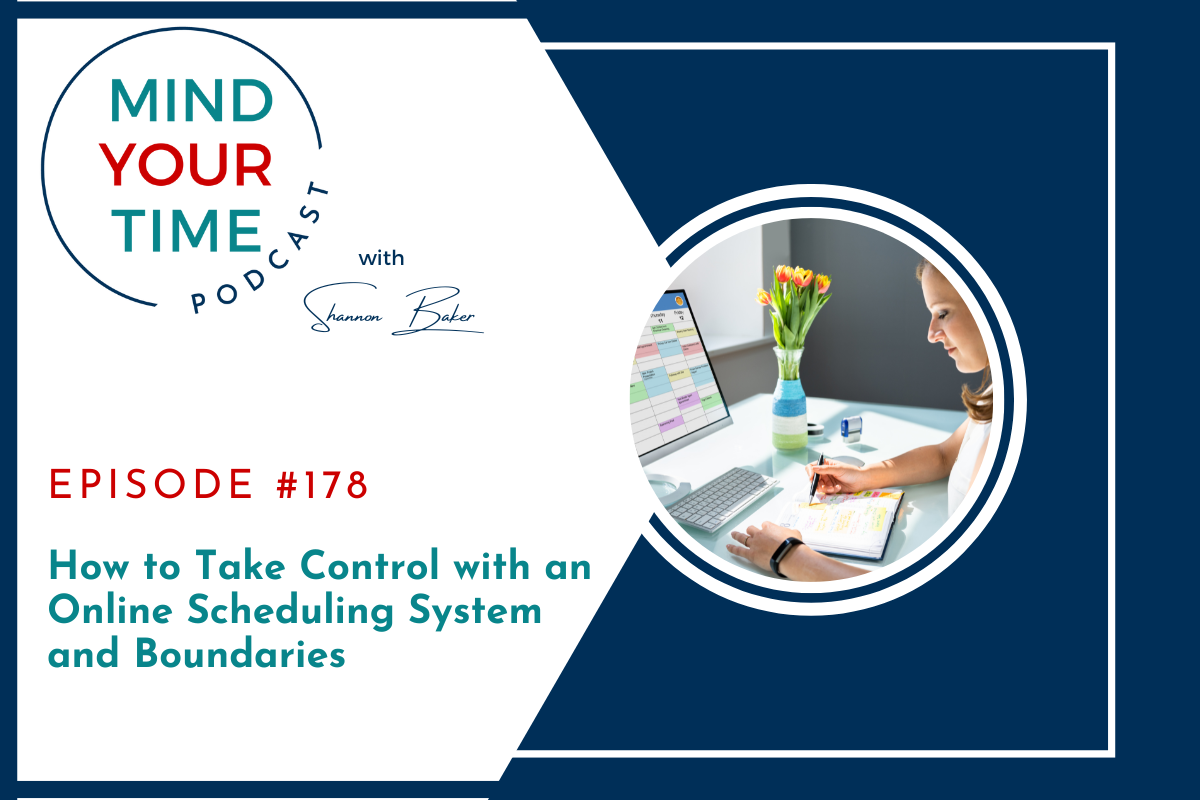Feeling like your business is running your life instead of the other way around? It’s time to flip the script with effective business scheduling strategies that will not only help you reclaim your time but also boost your productivity and drive sustainable growth. Imagine starting your day with a clear plan, knowing exactly what needs to be done and when. No more scrambling—just pure focus on what truly matters.
One of the most powerful business scheduling strategies is setting clear boundaries. Boundaries are more than just guidelines—they’re the invisible barriers that protect your time, energy, and sanity. When you implement the right scheduling system, you’re telling your clients when they can have your undivided attention. This is not just about controlling your calendar; it’s about aligning your business goals with your personal priorities. Tools like the Process Mapping Workbook and goal-setting worksheets, available inside The MY-T Society membership, are essential resources to help you do just that.
Using an online scheduler is another key business scheduling strategy that can transform how you operate. Imagine having automatic reminders, real-time calendar updates, and seamless integrations with tools like Google Calendar, Zoom, and GoToMeeting. These tools aren’t just conveniences—they’re game-changers that can save you both time and money. In fact, I’ve seen clients save hundreds of dollars each month simply by streamlining their scheduling processes.
But it doesn’t stop there. Effective business scheduling strategies also include maintaining a healthy work-life balance. By creating a robust scheduling system, you can ensure that your work doesn’t encroach on your family time. This is about living your legacy while keeping your business in check.
So, if you’re ready to take back control, start by implementing these business scheduling strategies today. With the right tools and mindset, you’ll be able to protect your time, increase your productivity, and grow your business on your terms. And if you’re looking for more in-depth guidance, don’t miss out on the free audio masterclass available in The MY-T Society membership—it’s designed to help you organize your back office and reduce chaos.
It’s time to stop letting your business run your life. Start implementing these business scheduling strategies, and watch how they transform not just your schedule, but your entire approach to business growth.
If you would like to hear the expanded version check out the podcast episode below.
6:19 – How to establish office hours and clearly communicate your boundaries to clients
15:24 – Why you need a welcome kit and onboarding process to set and communicate your boundaries
20:00 – The importance of you being disciplined and sticking to the boundaries you’ve established and communicated
24:00 – Hear a case study that emphasizes how streamlining the scheduling process saves time and money
Are you tired of feeling like your business is calling the shots, instead of you? Imagine flipping the script—taking back control of your time and setting rock-solid boundaries that allow you to use your energy where you want to. Today, I'm going to help you take control, boost your productivity, and even put some extra cash in your pocket. If you're ready to break free from the chaos and live your legacy on your terms, keep listening.
What if I told you that the key to freeing up more time in your day doesn’t require you to get more work done? Imagine starting your day with a clear plan, knowing exactly what needs to be done and when to do it. No more scrambling to keep up—just simply focusing on what truly matters. And the best part? You have access to all the resources I talk about today inside The MY-T Society Membership, including tools to help you with goal setting, process mapping, and even email management.
How do you feel when you get to check things off your to-do list? I know I get a great feeling of accomplishment because I can physically see my progress. But while checklists are a great starting point, they do have limitations. That’s why I created the Process Mapping Workbook that helps you go beyond basic checklists, guiding you through the process of documenting and automating your processes. When you rely solely on checklists, it often feels like every time you cross something off, three more things pop up out of nowhere. This workbook can help you streamline and automate those tasks, so you can truly free up your time.
And speaking of freeing up time, it’s essential to ensure that your goals are aligned with your business priorities. The Goal Setting Worksheets available in The MY-T Society membership are designed to help you define and align your priorities with clear, achievable goals. These worksheets guide you in setting up a strategy that makes the best use of your time, ensuring that every task you complete moves you closer to your business objectives.
So, let’s talk about how we can take charge of our time, not by adding more hours to the day, but by making better use of the 24 hours we already have. One of the six core systems every business needs is a scheduling system. It might sound simple, and you may have tried to use one before and it didn’t quite work out, but trust me, when used properly, it can be a game-changer. One of the biggest reasons you need one is to help you set some boundaries. And no matter who you are or what type of personality you have, you struggle with this area. More than likely, you have some in place but you don’t stick to them. But we will get back to that later.
Boundaries are the invisible barriers you need to create to protect your time, energy, and most importantly, your sanity. Think of them as the guidelines put in place to train people to interact with you if they want your undivided attention. Always remember this: the only people who get mad at you for having boundaries and sticking to them are the ones who benefit the most when you don’t have any. That’s right!
I’ve seen this happen time and time again, especially among solopreneurs. We can get so caught up in trying to please our clients that we spend too much time working for them like we’re employees. So, the line between work and family becomes almost non-existent.
Let me tell you, my friend, you might feel that you’re providing the best service ever by operating your business like a 7-11, but in reality, you’re training your clients not to respect your time.
Here’s an example. Have you ever been in the middle of cooking dinner, and your phone rings? It’s a client who missed a deadline and now wants you to save the day. They say, “I’m so sorry! I’m just getting to your email! Is it too late for you to take care of this for me, even though I missed the deadline?”
If you’re a people pleaser like I used to be, you might say yes, even though you’re irritated and now have to work late into the night to get it done. Suddenly, you’re in a bad mood, and your family doesn’t have your full attention at dinner. But your client is happy because they got what they wanted, even though they didn’t give you what you needed to complete the task. And guess what? This will keep happening unless you change how you operate.
So today, I’m going to share three steps you can take with your clients so you never have to feel obligated to put your business above your family or your free time again.
First, let’s talk about setting your boundaries.
Set office hours, and these aren’t necessarily the hours that you are actively working. Office hours are when you’re available for work and when you’re not. This isn’t just about answering calls or responding to emails—it’s about giving yourself time to focus on the important tasks without distractions. Working hours are when you actually get things done based on your schedule that week. For instance, if your office hours are Monday to Friday from 9:00 am to 4:00 pm, but you have to drop the kids at school in the morning, you may not sit down to start working until maybe 10 am, and that’s if you don’t need to make any other stops along the way. So you may spend 20 minutes every evening after the kids go to bed scheduling email responses to go out during your office hours the next day.
You need to take control of your calendar by designating specific times to respond to messages, emails, and even to be on social media daily. And be clear about the days and times you’re available for business calls. This helps you avoid distractions and allows you to be fully focused on whatever you’re doing.
These boundaries are great parameters for your schedule, especially if you time block like I do. Once you’ve set your boundaries, the next step is to communicate them. It shouldn’t surprise you that I’m a huge fan of having a process for every repeatable action in your business.
And when it comes to client engagement, you need to have a documented and automated process that starts from the moment they first contact you online. That’s when onboarding really begins. Once a client is ready to work with you, there should be a clearly defined “Welcome” process in place that clearly communicates what they can expect next. I use a template for my welcome email, which includes:
My hours of operation and response policy
Holiday closures and my vacation notice policy
A referral reminder
A confidentiality reminder
And that’s not all. These same policies are in my service agreement. And when I have the initial onboarding call with my clients, we review these policies as well. I also send my clients a yearly reminder email to refresh their memories and inform them of any changes to my hours and policies. To help you establish and communicate these boundaries effectively, there is a Welcome Kit & Onboarding Process Workbook inside The MY-T Society. These resources will help you create a welcome kit for your business to ensure that your clients understand your availability and respect your time from the very beginning.
Why do I do all this? Because if you don’t, you make it hard for your clients to understand how to best work with you and respect your time. And here’s the thing—clients want the best work from you possible. Boundaries help you do your best work, and honestly, your clients will appreciate it. And I know you may feel this is too restrictive, but it’s not. In reality, you’re being professional. When you state your boundaries and expectations in a kind and respectful way, your clients will see it as part of your professionalism and will respect you for it.
Now, you might be wondering how to introduce these boundaries to existing clients. A great time to do this is during your regular check-in calls. This is the perfect opportunity to review these boundaries or give them reminders. You can send them an email that summarizes your policies and then discuss any questions they have during your call. The key is to make sure everyone is on the same page. But I want to caution you. Don’t do all the work to get the boundaries in place and then disrespect your own boundaries.
Boundaries are meaningless if you don’t have the discipline to stick to them. So, you need to make a commitment to yourself and to your family to protect your time. This is the next big struggle I see among entrepreneurs. YOU HAVE TO BE DISCIPLINED.
Now, keep this in mind because I mentioned it earlier: office or business hours and working hours are not the same. Don’t feel obligated to reply to emails or any messages that come in after hours. Schedule your emails to go out during business hours and respond to other messages the same way. Here’s why.
Sometimes your clients know your boundaries, but they’re like children. They will test you to see if they can sidestep them. But you need to be firm and use discretion. And don’t assume they expect you to ignore your boundaries either. They might simply have had time to email you late in the evening or over the weekend. That doesn’t mean they expect a reply ASAP or that they want you to work on weekends. It just means that’s when life allowed them to respond. STICK TO YOUR BOUNDARIES. Respond during office hours. And honestly, I’ve made it a practice to send most responses no matter what during my office hours. That’s because I don’t want other consultants I’m working with to send me requests at times outside of my boundaries and expect me to reply either.
And if you choose to ignore my advice about boundaries, that’s okay. But I don’t want you to ignore what I’m about to say. If you do nothing else, please make sure you establish a main form of communication with your clients and keep as many conversations as possible in that place.
I have different platforms I use with my clients, and we pick what works for them outside of email. And that’s where 98% of our conversations take place. It makes it easier for both of us to keep up with what was said. But my goal is to shift most communication to take place inside the monday workspaces I use with my clients. We’ll see how that goes.
Something else that will help you stick to your boundaries in business is using an online scheduler. And I intentionally didn’t start with this system because it won’t work the way it’s supposed to if you don’t have boundaries in place. An online scheduler is key to making sure you aren’t distracted by unscheduled phone calls and can focus on your work. But you also need to turn off all notifications on your phone so they don’t distract you when you’re working—especially email notifications. That way, you aren’t tempted to open it up, stop what you’re doing, and reply.
Now, all this being said, there are exceptions where you may need to meet with a client or take a call outside of your normal business hours. But this needs to be an exception and not the rule. And you need to make sure you explain that when you make the arrangements. A good client will understand and appreciate you even more for it!
And remember, a scheduling system is just one of the six core systems every business needs to function efficiently and grow sustainably. Without it, you risk letting your business control your life, rather than the other way around. I’ll put a link in the show notes to the episode I did that talks about all six.
No matter who you are or how long you’ve been in business, you have to have a schedule to get things done. And you have to manage your time and understand how to control your calendar instead of your calendar controlling you.
Using an online scheduler really makes it easy for everyone to have your undivided attention. You’re telling people when they can talk to you, and they can make a decision based on your availability and what works for them.
Research shows that 35% of customers prefer scheduling appointments during non-business hours, and 40% of online bookings actually happen after working hours. I know I fall into the category of someone who schedules appointments at odd hours, and my clients do the same thing.
But in order for an online scheduler to be beneficial, you have to have a calendar that you maintain in real time. The scheduling tool syncs with your calendar and displays the services you offer and all available time slots. You can connect your online scheduler to Google Calendar, Outlook, or iCal. It can also collect a payment for you if it’s a paid appointment because you can connect your Stripe or PayPal. So you don’t have to wait for anyone to pay an invoice. Now, here are what I feel are the next biggest benefits you experience when you use an online scheduler.
An Online Scheduler Sends Reminders For You
How many times have you set an appointment with someone and forgot to put it on your calendar, so you were a no-show? It’s embarrassing, right? How do you feel when this happens to you? It’s irritating!
An online scheduler removes your memory from the equation. After an appointment is booked, your online scheduler adds the appointment to your calendar automatically, blocks it off so you won’t have overlapping appointments, and gives people the option to do the same so everyone is on the same page.
An online scheduling tool will also send automatic confirmations and reminders to the other person, which reduces no-shows. You can connect your account to Zoom, Google Hangouts, or GoToMeeting as well, and it will include the link for them to join your meeting automatically. Those emails also take the hassle out of rescheduling or canceling appointments. The links to do so are in the reminder emails.
It Screens People For You
Before you hop on a call, wouldn’t it be great to have all the important information in one place where you can easily refer to it? Are there some qualifying questions you’d like answered before you get on the phone with a new lead? Well, if you use intake forms with your online scheduler, that’s exactly what you get and more!
I use different intake forms for different appointment types. For my free call, it gathers the data I need to know if the business owner is really ready for my services. I know what they do, who they serve, a range of how much their business makes, how they found me, why they are reaching out now, and how much of a priority getting their systems in place is.
The intake form for a back-office assessment, which is only available if you’re a member of The MY-T Society membership, is much more detailed and gives me more background information so that I can prepare for the assessment. And if I’m having a guest on my podcast, it collects their bio, headshot, all the links I need, and more. AND that information is automatically entered into an Airtable base so that I can easily refer to it later.
How’s that for boosting your productivity!
Now, let me share a story that perfectly illustrates the power of using a built-out scheduling system. One of my clients was struggling with scheduling meetings and managing their inbox. They were paying a VA to handle every step of the process manually, even though the online scheduler was set up. This often meant emails sent to schedule a meeting were missed, or there was a delay in setting up meetings, again despite having an online scheduler in place. Then the VA resigned on short notice. So, of course, panic set in. But her back office wasn’t truly ready to support a VA efficiently. So, I took this opportunity to implement a more efficient system.
I created template response messages, and we automated parts of the scheduling process while still maintaining a personal touch. This made setting up meetings much more efficient and saved my client a significant amount of money.
Previously, they were paying for 10 hours a week, with 5 hours or more spent on scheduling and rescheduling meetings. By streamlining this one system, she saved $700 per month and increased efficiency. Now that more systems have been put in place, she can hire a VA and onboard them with ease. This not only saved money but also improved overall customer relations, productivity, and team morale.
Think about what you could do with an extra $700. Perhaps invest it back into your business, upgrade your systems, or even take some well-deserved time off. This is the kind of transformation just having a scheduling system can bring.
And if you find your inbox overwhelming and feel like managing your emails is taking up too much of your time, the Inbox Zero Workbook inside The MY-T Society membership will be a game-changer for you. This resource will guide you through taking control of your email management, reducing overwhelm, and allowing for better focus during your working hours.
If you need a little extra help setting up your scheduling system, or if you’re ready to create a welcome kit and get your onboarding process in place, then join us inside The MY-T Society membership. The pieces you need, like templates and workbooks, are in the resources section. We need to get this off the to-do list and focus on growing your business this year.
Now, let’s review the three steps to taking control of your time:
Step 1: Establish Your Boundaries
Set your office hours. Designate specific times to respond to messages, emails, and to be on social media daily. Designate specific days and times for business calls.
Step 2: Communicate Your Boundaries
Make sure your onboarding process includes a welcome kit that clearly communicates your boundaries to your clients. Regularly remind existing clients of these boundaries, and review them during your check-in calls.
Step 3: Stick to Your Boundaries
Be disciplined in enforcing your boundaries. Don’t feel obligated to respond outside of your set business hours. Use an online scheduler to manage appointments, and ensure that your clients understand and respect your availability.
Setting up these boundaries for your business will protect your sanity and help you focus on keeping your customers happy. Believe it or not, they will respect you even more when you have these boundaries in place and stick to them. Not to mention your income will increase, and you’ll be able to enjoy quality time with your family and friends!
And don’t forget this: if you say yes to something outside of the boundaries, it means you’re saying no to something your boundaries are supposed to protect. The longer you’re in business, the more important it is to set aside time to review the boundaries you’ve set to ensure they are still serving you, moving you toward your goals, and letting you live a more intentional life.
Remember, a scheduling system is just one of the six core systems every business needs to function efficiently and grow sustainably. Without it, you risk letting your business control your life, rather than the other way around.
Let’s make a commitment together to protect our time, live our legacy, and grow our businesses without sacrificing what matters most. You’ve got this, and I’m here to help every step of the way.
Resources mentioned in this post:
Let’s connect online:
Follow Me On Instagram: @the_shannonbaker




